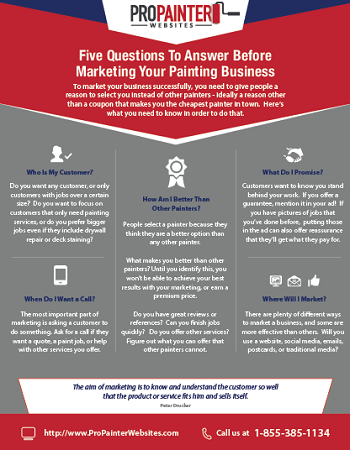Find Out About The Ways In Which Seasonal Elements Can Affect The Success Of Commercial External Painting And Establish The Best Times To Achieve Long Lasting Outcomes For Your Project
Find Out About The Ways In Which Seasonal Elements Can Affect The Success Of Commercial External Painting And Establish The Best Times To Achieve Long Lasting Outcomes For Your Project
Blog Article
Team Writer-Regan Celik
When you're preparing a business outside painting project, seasonal variables can make or damage your results. You'll intend to consider just how temperature and moisture influence paint application and drying times. Choosing the appropriate period can ensure your paint sticks correctly and lasts longer. Yet which periods are truly the best for this sort of job? Allow' toronto exterior house painting out the crucial elements that can influence your job's success.
The Impact of Temperature Level on Paint Application
When you're planning an industrial external painting job, the temperature level can substantially impact how well the paint sticks and dries out.
Ideally, you want to paint when temperatures vary in between 50 ° F and 85 ° F. If it's as well cool, the paint might not cure effectively, leading to concerns like peeling off or cracking.
On the other hand, if it's also warm, the paint can dry out also quickly, protecting against appropriate adhesion and leading to an uneven coating.
You need to likewise consider the moment of day; early morning or late afternoon offers cooler temperature levels, which can be more beneficial.
Constantly examine the supplier's referrals for the details paint you're using, as they often offer advice on the perfect temperature range for ideal outcomes.
Humidity and Its Effect on Drying Times
Temperature level isn't the only environmental element that affects your business exterior paint job; moisture plays a significant role also. High moisture levels can slow down drying times dramatically, impacting the general quality of your paint job.
When the air is saturated with dampness, the paint takes longer to heal, which can result in issues like bad bond and a greater danger of mold development. If you're painting on a specifically damp day, be planned for extensive delay times between coats.
It's essential to check neighborhood climate condition and plan appropriately. Ideally, go for moisture levels in between 40% and 70% for optimum drying out.
Keeping these consider mind guarantees your job remains on track and provides a lasting surface.
Best Seasons for Commercial Outside Paint Projects
What's the best season for your commercial external painting jobs?
Spring and early autumn are generally your best choices. During these periods, temperatures are mild, and moisture levels are often reduced, producing optimal problems for paint application and drying.
Avoid summer season's intense heat, which can cause paint to completely dry as well rapidly, bring about poor attachment and coating. In a similar way, winter months's cold temperatures can impede appropriate drying and curing, risking the longevity of your paint work.
Go for days with temperature levels in between 50 ° F and 85 ° F for ideal results. Keep in mind to examine the local weather report for rain, as wet conditions can destroy your project.
Planning around linked webpage guarantees your painting project runs efficiently and lasts much longer.
Conclusion
To conclude, planning your industrial outside paint projects around seasonal factors to consider can make a significant difference in the outcome. By organizing job during the optimal temperature levels and humidity degrees, you'll guarantee far better adhesion and drying out times. Remember to watch on regional weather prediction and select the correct time of year-- spring and early loss are your best bets. Taking these steps will assist you achieve a sturdy and expert finish that lasts.
